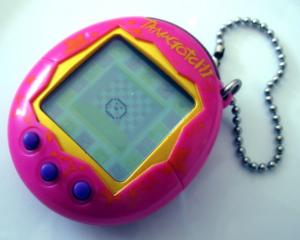Physical Computing’s Greatest Hits (and misses)
This reading called me out from the first example, because I was thinking about making some sort of theramin-like instrument for my final project. However, it is true that “non-original” does not equal “bad”, and the themes here provide plenty of room for one’s own unique twist. The examples provided were inspiring, and I appreciated how simple interactions (such as stepping on a square) were made engaging by the conceit behind them (learning how to salsa dance). This reading was a great illustration of how the conceptual and emotional aspects of a project are just as important as the technical aspect, and how different concepts can transform the same interaction. After this reading, I have some more ideas on how I could take these themes and make them more unique.
I was thinking it might be interesting to make an “instrument” based on photoresistors which would change the volume of different instrumental tracks (ex. piano, violin, flute), allowing people to “compose” a song by bringing in those tracks. The tracks would only play certain chords so that the composition remains harmonious. Another idea I have is to make a little “pocket pet”, similar to Tamagotchi, that would react to the user’s caresses and pats. However, instead of a “common” pet like a dog or cat, perhaps it could be an endangered species.
Making Interactive Art: Set the Stage, Then Shut Up and Listen
My biggest takeaway from this reading was the quotation, “Your task in designing an interactive artwork is to give your audience the basic context, then get out of their way”. I think this is holds true not only for interactive art but for everything we perceive in life. It almost always benefits us to not enter into things with one set vision about how things must be, and to be open to surprises that happen along the way. As someone who has written and produced songs, I know it is hard to let go of control, but there is only so much you can control, and some of my favorite reactions to my songs are from people who interpreted their own message from it. It is also important to realize that there is no way to please everyone with your art, and just because it is not for one person does not mean that it is inherently flawed.
